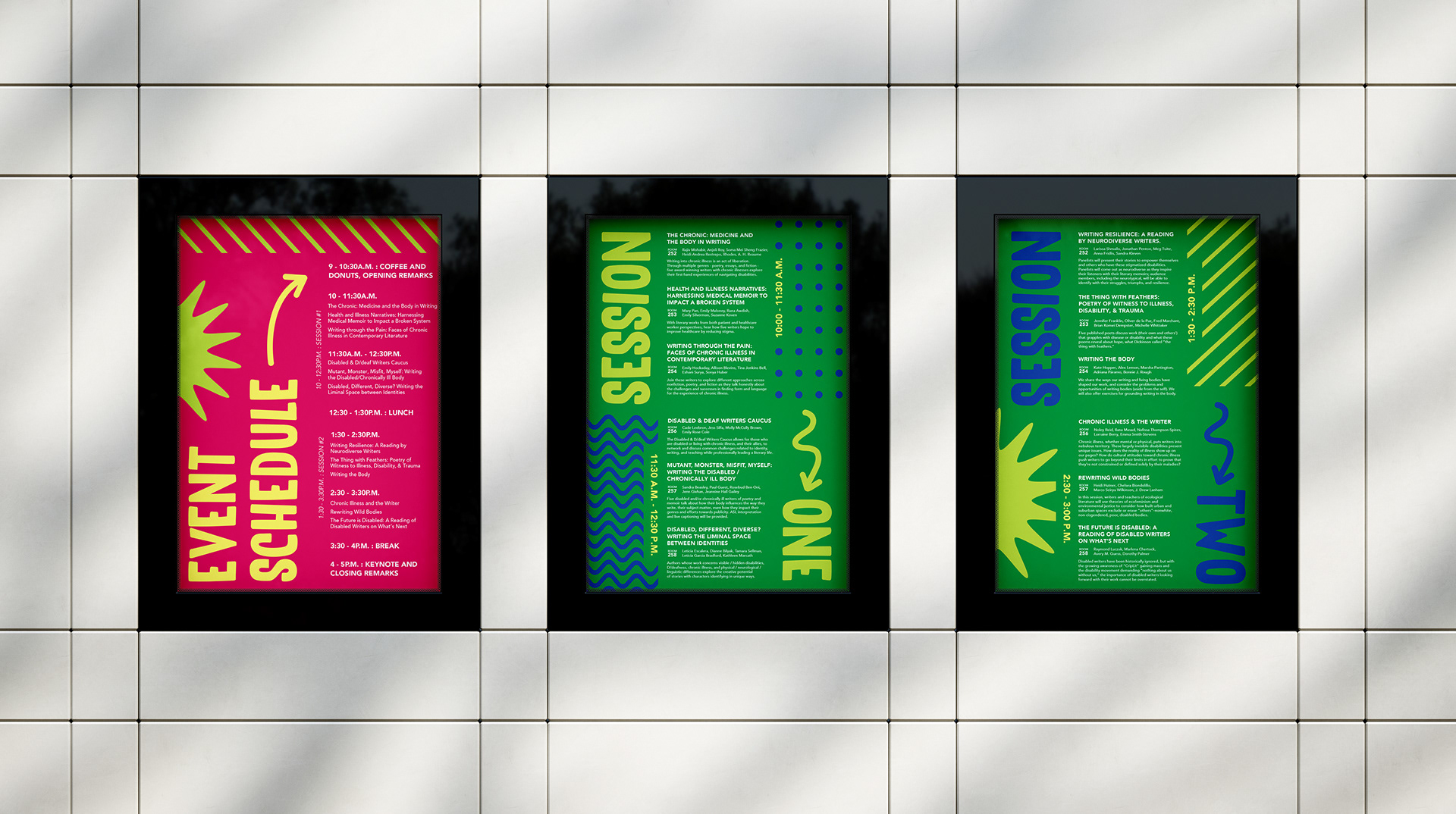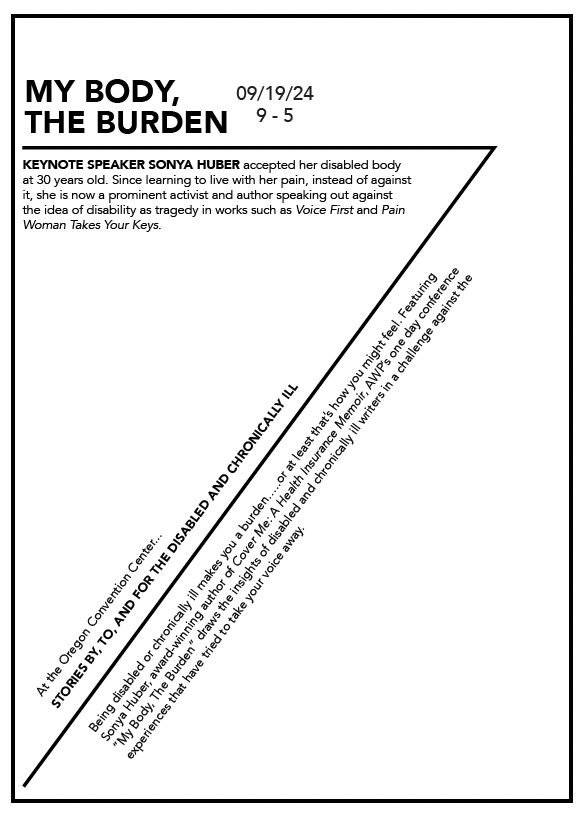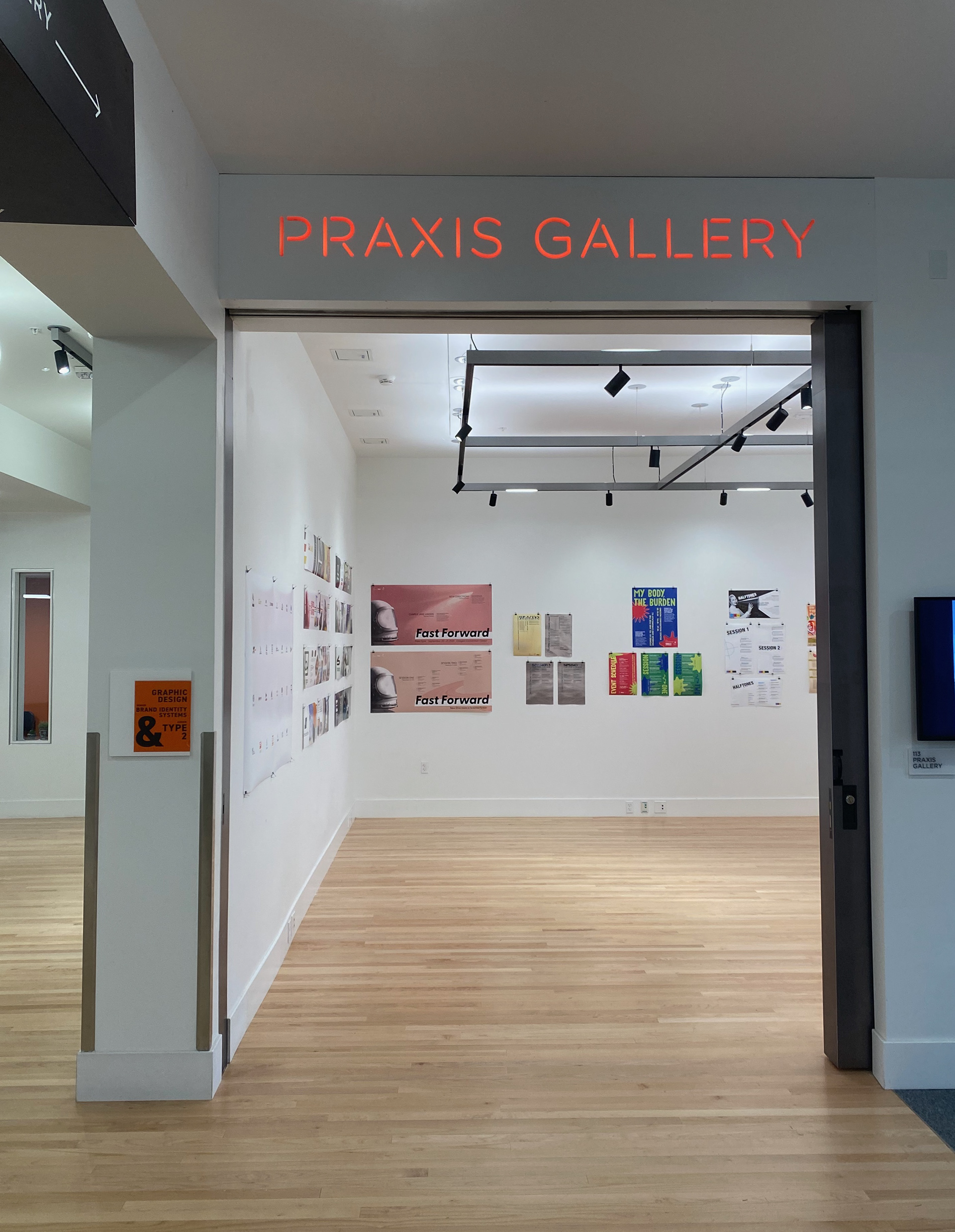BRIEF
Create a comprehensive branding system and subsequent materials for a literary conference hosted by the Association of Writers and Writing Programs. "My Body, The Burden" features disabled and chronically ill writers in a challenge against the typical trope of "disability as tragedy". Visual elements are bold and vibrant and the use of energetic colors and chunky type is contradictory to the normally formal, melancholy nature of work in the same genre.







Attendee and Speaker Materials
Conference attendees and speakers receive several items. The Conference Program contains schedules, articles and more distributed. Additionally, participants receive tote bags containing a notebook and their ID card.






The Process
First, ideation was done surrounding the overall look and feel of the conference and a concept board was created. Next, an underlying 'grid' system was established that was applied across conference materials. After several rounds of development, a diagonal grid with a strong, horizontal header was ultimately selected.

Initial Gestalt grid work

Grid continued with information

Branding applied

Final refined grid system on poster
Gallery Feature
This work was shown in the Fairbanks Hall Praxis Gallery in January 2024 as part of an annual graphic design student work showcase.



